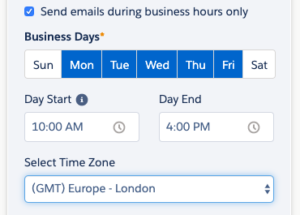Although technology is continuously evolving and trends are constantly changing, one thing in the digital media landscape remains clear – Email Marketing is here to stay. I’m here to share what you can do to run a successful Email Marketing Campaign and achieve valuable engagement, attention, leads and sales.
1. Enticing Subject Lines
This is where the fate of your email communication begins. Whether an email is accessed on a smartphone or desktop, the subject line is the first piece of information your audience will see and most likely decide whether to interact or not. Many subject lines work due to the sense of mystery behind them. Pushing recipient curiosity and interest will result in making them want to find out more information which requires opening up the email and as a result, a higher open rate.
Make your subject line as compelling and irresistible as possible for the recipient, persuading contacts to open the email. Promise your customers something that stands out from other emails in their inbox, speak to them directly and tell them what will benefit them from reading your email communications. However, you must ensure your tone of voice is not forceful or losing the friendly touch! Keep your subject lines simple, short and effective. You don’t want to bore your audience straight away. This article from Salesforce has some great tips for the most important 50 characters of your email.
Note! The biggest mistake you can make is not including a subject line. This will only increase the chances of the email being ignored, deleted or irritating the recipient at the first touchpoint.
2. Get Personal

Creating a Subject Line relevant to the email’s overall topic leads us to another key element in email marketing, which is optimising your content. Consumers today have come to expect to receive relevant, personalised content and experiences online. To meet these demands as marketers, it’s important to prioritise personalisation. Rather than sending standard generic emails, personalising your content, as little as it may be, contributes much more of a thoughtful and friendly vibe. As a result, increasing customer engagement, open rates and building long-lasting relationships.
There are many ways in which you can personalise your emails. One of these includes starting an email with the recipient’s first name. Using marketing automation tools such as Merge Fields in Account Engagement, you can incorporate a recipient’s first name in the subject line as well as the content body. This gives the impression you pay attention to who your customers are and value their efforts. However, personalisation doesn’t have to be limited to only using customer data. You can also personalise your brand. This softens the line between the brand and the consumer by adding a human-to-human connection and trust.
However, personalisation does not stop there! You can also personalise your emails by creating relevant content for customer needs. This includes sending out focused content based on customer interests to certain email lists, personalising language to locations and sending emails based on time zone.
Engagement
Don’t forget to make your emails engaging. Imagine how many emails the prospects may receive. This is why it’s important to stand out. The first thing that comes to our mind might be to include a video. But did you know that not all email service providers accept videos embedded in emails? You can in fact instead increase your chances of landing in your prospect’s spam folder! It would be much better practice to include an image in your email that is linked to where your video is hosted.
 Zoe Fisher Principal Marketing Automation Consultant
Zoe Fisher Principal Marketing Automation Consultant
Looking for help with Account Engagement?

Looking for help with Account Engagement?
3. Testing
Another key thing that could improve your email marketing strategy is testing. In marketing automation you have the choice to run A/B testing on your subject line or the location of your CTAs for example, and see how your email will render for different devices, browsers and email providers. A tool such as Account Engagement offers you the possibility to test all of these different elements, in order to help you understand what performs the best for which target group.
4. Get the timing right!
It’s really important to take a strategic approach when planning your email marketing campaigns. Planning how often you send emails can have a significant effect on your email engagement rates especially if you want to retain your customers. Sending too many may result in suffering email fatigue and lead subscribers to be disengaged or unsubscribe. On the other side of the spectrum, sending too little can ultimately lose the attention of your audience.

A good way to implement an automated process of sending out emails is using Account Engagement’s Engagement Studio feature. This enables customer conversions by leading them through a journey of touch points at a pace set by you, the marketer. Moreover, in Account Engagement you have the ability to select when emails can be sent. This includes everything from during business hours to selecting the time zone.
5. Reporting
You are now ready to schedule your optimised emails! However, don’t forget about the follow-ups and learning from your email marketing campaigns. We highly recommend regularly reviewing your email reports. Key performance indicators (KPIs) may differ depending on your email campaign and its objectives. Businesses have found these metrics important: Total sent, Bounces, Delivery rate, Unique opens, Unique CTR, Total Opt-Outs and Spam. CTR is especially a metric that will give you indications of how engaged your prospects were with your email. These metrics also help you understand what type of content your target group is the most interested in. Being able to track the links in your email, is therefore very important.
For more details on implementing an Engagement Studio in Account Engagement, have a read of this post. If you would like to know more about how you can optimise your email marketing campaigns, contact us now.
*This blog has been updated for 2023.


